This past weekend marked Redwood Empire Bonsai Society’s 33rd annual show. As always, the event was a big success as enthusiasts from up and down the west coast came to appreciate the bonsai on display.
Prostrata juniper
Below is a small selection of this year’s trees, starting with a California juniper styled by Peter Tea.
California juniper
It’s a beautiful tree, and the work looks great. More specifically: the foliage is healthy and dark green; the density is good from top to bottom; the tree is well-prepared for exhibit (clean deadwood, clear lifeline); and the styling looks great.
How to improve a tree like this in the future? Keep up the good work. Over time the branch pads will continue to mature and begin to convey the great age that we see in the deadwood. A less-formal and slightly-smaller pot could make the tree look bigger and complement the soft curves in the trunk and in the silhouette.
Korean hornbeam
Good Korean hornbeam bonsai have interesting trunks. Peering beneath the foliage of this specimen reveals multiple trunks with the white bark and angular movement characteristic of the variety.
The atlas cedar below is very well shaped. The largest branches are at the bottom, and the gaps between branches shrink towards the top. Branch angle is consistent from top to bottom and the bottoms of the branch pads are clean.
Atlas cedar
I think of coast redwood as a wildcard bonsai variety. Some of the most compelling specimens don’t suggest slender giants but instead convey character through interesting shapes and deadwood design. The redwood below is a good example of this.
Coast redwood
Sierra junipers, on the other hand, are bonsai presented at actual size and in the style they are known for in their high Sierra environment. Here’s a powerful example with lots of deadwood.
Sierra juniper
The Sierra juniper below is much smaller. I find the tree compelling because it has interesting movement and deadwood. This tree will improve greatly as the foliage forms dense, discrete pads that complement the movement of the trunk.
Sierra juniper
Pyracantha bonsai is great for adding color to an exhibit. The specimen below has good twisty movement from the base of the trunk to the end of each cascading branch.
Pyracantha
Good root-over-rock bonsai is hard to find. The quality of the rock is important, as is the character of the roots. Note how the roots follow the contours of the stone on which they are fixed without following straight lines.
Trident maple
The olive below is a good argument for making more olive bonsai. The branches ramify quickly, the leaf size shrinks with little effort, and the trunk begins to show age after relatively short cultivation as bonsai.
Olive
Atlas cedar is a very malleable species. As such, we expect bonsai specimens to have a good silhouette. The semi-cascade specimen below looks good – and is that a pot by Michael Hagedorn?
Atlas cedar
For REBS members and event regulars, the presence of Frank Bardella was dearly missed this year. Frank made the club one of the strongest bonsai organizations in Northern California and grew the show into one of the biggest and best on the West Coast. Frank passed away in March (see brief obituary).
Subscribe to Bonsai Tonight
New Posts Delivered Every Tuesday and Friday
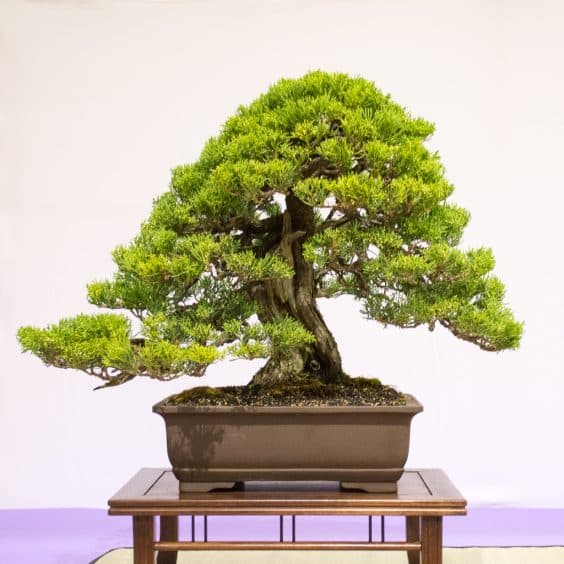
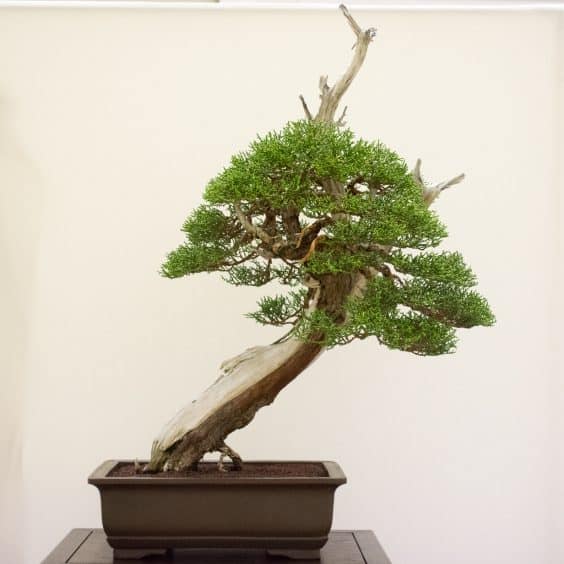
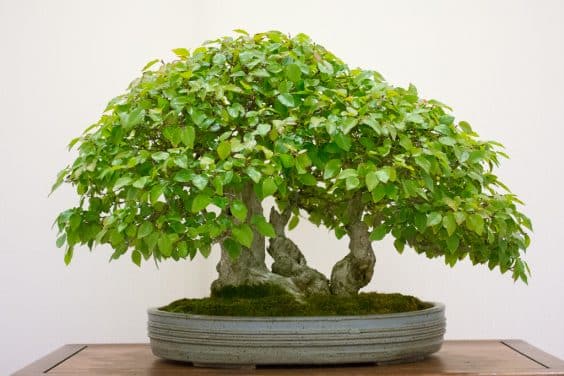
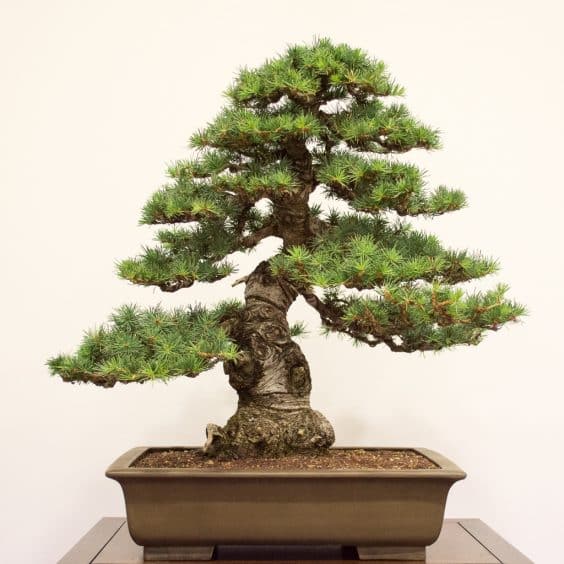
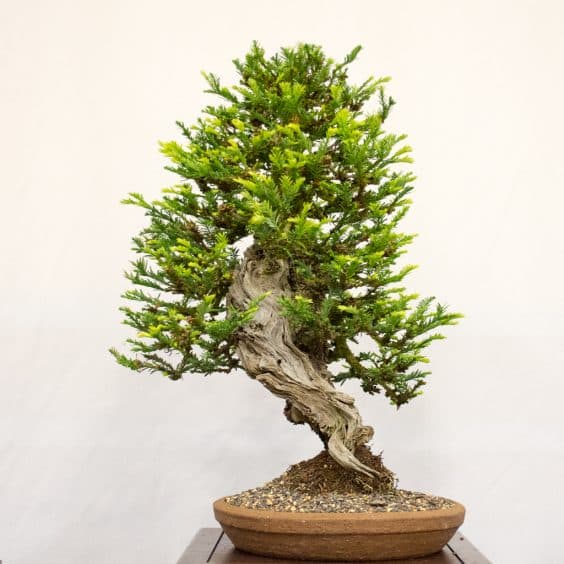
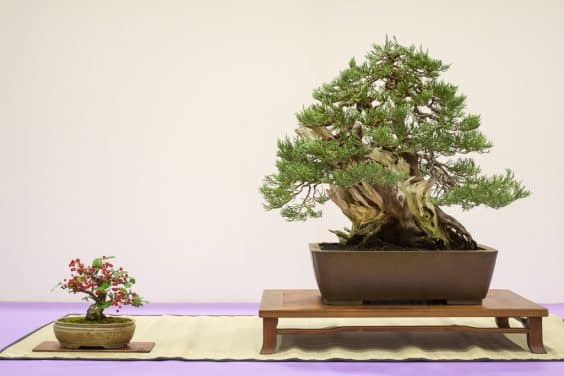
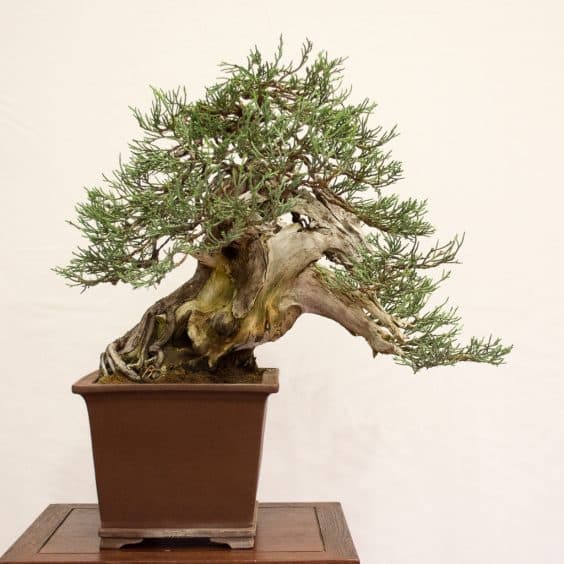
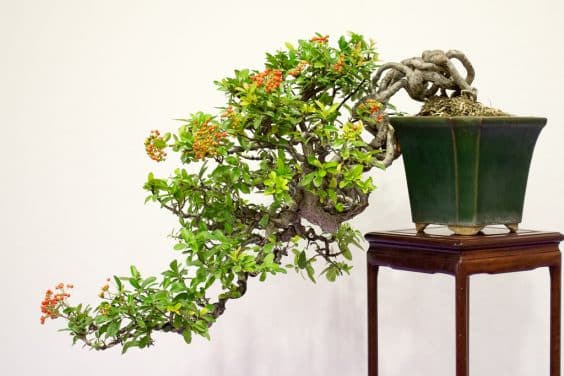
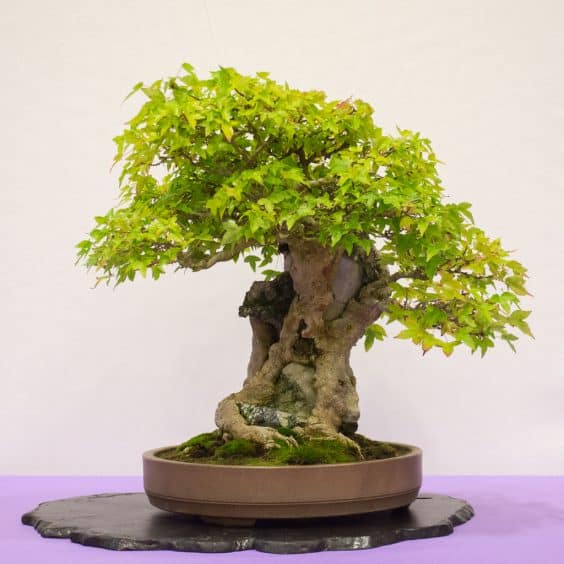
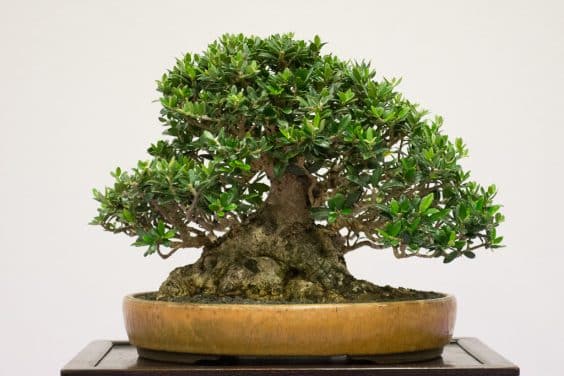
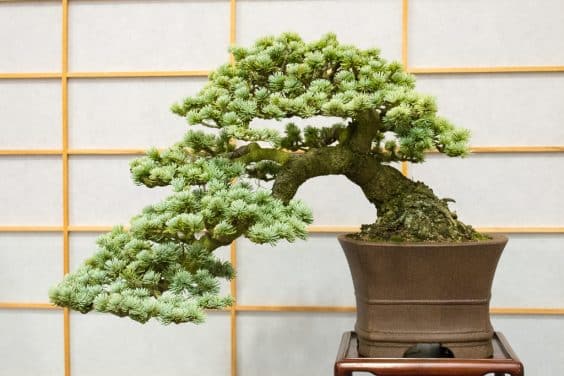
John says
Thank you for the article. Very nice displays!
I recently purchased my first European olive. It’s just a small thing currently but has a good structural starting point. I’ve done some Google-ing and asked around, but do you have a favorite article or resource for olive bonsai care and cultivation? Many thanks!
Jonas Dupuich says
Thanks John! Good question about olive bonsai resources. I can’t think of good resources off the bat – will be good to hear if others have suggestions.
Fortunately, they are a pretty straightforward variety. Following basic broadleaf evergreen techniques works well for olive. Will look to post more about them in the future and share what resources I come across.
John says
Thanks Jonas. That’s what I’d heard and read about them: that they’re fairly straight-forward without any significant unique quirks for the species. Just want to make sure I’ve done my homework!
I’ve admired the full-sized trees for a while and since they cannot grow here in the Midwest, excited to now have my own bonsai version.
Ed Stanton says
Jonas, Enjoyed your concise critiques of these trees–would like to see even more of this on future posts. All best to you
George Haas says
The 33rd Redwood Empire Bonsai Society annual bonsai show was a great success. As in previous years, club sensei Kathy Shaner’s attention to detail and dedication to her art form makes the event one of the best and largest bonsai exhibitions in the U.S. Show Chair Bob Shimon, and many leaders – Ivan Lukrich, Wayne & Carol Culp, Gene Lynch, Barbara Bardella, Suzanne Waxman, and their many volunteers work together to provide bonsai enthusiasts and the public an extraordinary experience in the living art form of bonsai. Thank you Jonas for this wonderful blog highlighting the 2016 REBS annual bonsai show.
Josu says
Hello from the Basque Country
In my opinion, the best book that exists on the cultivation of olive trees as bonsai is “Los Olivos en Bonsai” (ISBN: 2910009589100). of Miquel-Arnaud-Fonst-Jeker authors.
I do not know if there is an English version.
A couple of websites where I think you can buy the book or even download it. I suppose there are others.
http://www.quedelibros.com/libro/57934/Los-Olivos-en-Bonsai.HTML
https://www.planetahuerto.es/venta-los-olivos-en-bonsai_01081
Forgive my Google translator’s english
Great blog Jonas. One of the best.
Josu